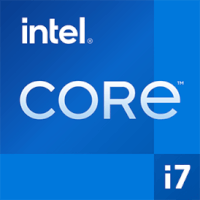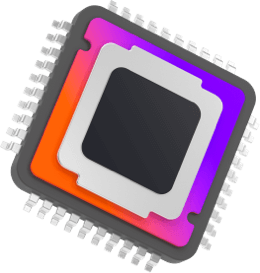| Apple A12X Bionic | Intel Core i7-8559U | |
| 15 W | Max TDP | 28 W |
| NA | Power consumption per day (kWh) | NA |
| NA | Running cost per day | NA |
| NA | Power consumption per year (kWh) | NA |
| NA | Running cost per year | NA |
Apple A12X Bionic vs Intel Core i7-8559U

The Apple A12X Bionic operates with 8 cores and 8 CPU threads. It run at 2.49 GHz base 1.59 GHz all cores while the TDP is set at 15 W.The processor is attached to the N/A CPU socket. This version includes -- of L3 cache on one chip, supports 2 memory channels to support LPDDR4X-4266 RAM and features PCIe Gen lanes. Tjunction keeps below -- degrees C. In particular, A12 Architecture is enhanced with 7 nm technology and supports None. The product was launched on Q3/2018

The Intel Core i7-8559U operates with 4 cores and 8 CPU threads. It run at 4.50 GHz base 3.20 GHz all cores while the TDP is set at 28 W.The processor is attached to the BGA 1528 CPU socket. This version includes 6.00 MB of L3 cache on one chip, supports 2 memory channels to support DDR4-2400 SO-DIMM RAM and features 3.0 PCIe Gen 16 lanes. Tjunction keeps below -- degrees C. In particular, Coffee Lake U Architecture is enhanced with 14 nm technology and supports VT-x, VT-x EPT, VT-d. The product was launched on Q2/2018
Apple A12X Bionic
Intel Core i7-8559U
Compare Detail
| 2.49 GHz | Frequency | 2.70 GHz |
| 8 | Cores | 4 |
| 2.49 GHz | Turbo (1 Core) | 4.50 GHz |
| 1.59 GHz | Turbo (All Cores) | 3.20 GHz |
| Hyperthreading | Yes |
|
| Overclocking | No |
|
| hybrid (big.LITTLE) | Core Architecture | normal |
| Apple A12X | GPU | Intel Iris Plus Graphics 655 |
| No turbo | GPU (Turbo) | 1.20 GHz |
| 7 nm | Technology | 14 nm |
| No turbo | GPU (Turbo) | 1.20 GHz |
| DirectX Version | 12 | |
| 2 | Max. displays | 3 |
| LPDDR4X-4266 | Memory | DDR4-2400 SO-DIMM |
| 2 | Memory channels | 2 |
| Max memory | ||
| ECC | No |
|
| 8.00 MB | L2 Cache | -- |
| -- | L3 Cache | 6.00 MB |
| PCIe version | 3.0 | |
| PCIe lanes | 16 | |
| 7 nm | Technology | 14 nm |
| N/A | Socket | BGA 1528 |
| 15 W | TDP | 28 W |
| None | Virtualization | VT-x, VT-x EPT, VT-d |
| Q3/2018 | Release date | Q2/2018 |
Cinebench R20 (Single-Core)
Cinebench R20 is the successor of Cinebench R15 and is also based on the Cinema 4 Suite. Cinema 4 is a worldwide used software to create 3D forms. The single-core test only uses one CPU core, the amount of cores or hyperthreading ability doesn't count.
Cinebench R20 (Multi-Core)
Cinebench R20 is the successor of Cinebench R15 and is also based on the Cinema 4 Suite. Cinema 4 is a worldwide used software to create 3D forms. The multi-core test involves all CPU cores and taks a big advantage of hyperthreading.
Cinebench R15 (Single-Core)
Cinebench R15 is the successor of Cinebench 11.5 and is also based on the Cinema 4 Suite. Cinema 4 is a worldwide used software to create 3D forms. The single-core test only uses one CPU core, the amount of cores or hyperthreading ability doesn't count.
Cinebench R15 (Multi-Core)
Cinebench R15 is the successor of Cinebench 11.5 and is also based on the Cinema 4 Suite. Cinema 4 is a worldwide used software to create 3D forms. The multi-core test involves all CPU cores and taks a big advantage of hyperthreading.
Geekbench 5, 64bit (Single-Core)
Geekbench 5 is a cross plattform benchmark that heavily uses the systems memory. A fast memory will push the result a lot. The single-core test only uses one CPU core, the amount of cores or hyperthreading ability doesn't count.
Geekbench 5, 64bit (Multi-Core)
Geekbench 5 is a cross plattform benchmark that heavily uses the systems memory. A fast memory will push the result a lot. The multi-core test involves all CPU cores and taks a big advantage of hyperthreading.
iGPU - FP32 Performance (Single-precision GFLOPS)
The theoretical computing performance of the internal graphics unit of the processor with simple accuracy (32 bit) in GFLOPS. GFLOPS indicates how many billion floating point operations the iGPU can perform per second.
AnTuTu 8 benchmark
The AnTuTu 8 Benchmark measures the performance of a SoC. AnTuTu benchmarks the CPU, GPU, Memory as well as the UX (User Experience) by simulating browser and app usage. AnTuTu can benchmark any ARM CPU that runs under Android or iOS. Devices may not be directly compareable if the benchmark has been performed under different operating systems.
Estimated results for PassMark CPU Mark
Some of the CPUs listed below have been benchmarked by CPU-Comparison. However the majority of CPUs have not been tested and the results have been estimated by a CPU-Comparison’s secret proprietary formula. As such they do not accurately reflect the actual Passmark CPU mark values and are not endorsed by PassMark Software Pty Ltd.

Electric Usage Estimate


